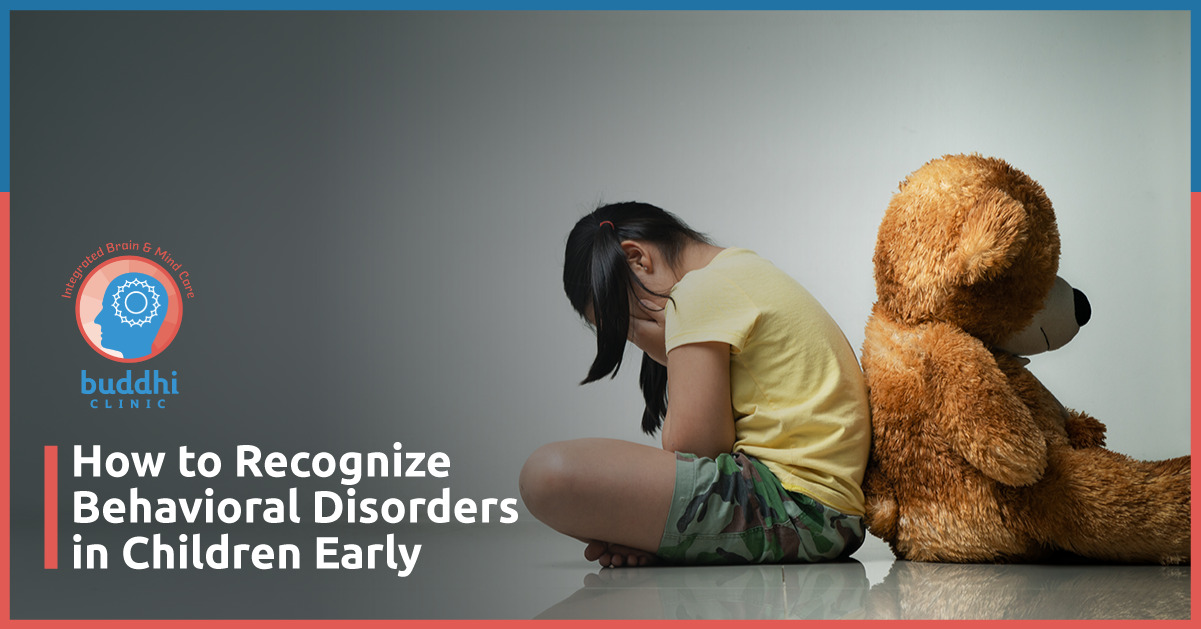Introduction
Children progress through various stages of life, each with a change in behavior, mood, and interaction. An occasional sullen, tantrum-like, or obstinate behavior is common, but repetitive behavioral difficulties are an indicator of a disorder. Early recognition of signs of Behavioral Disorders in Children enables prompt intervention so that children may receive the assistance necessary to attain their full potential.
Understanding Children’s Behavioral Disorders
Behavioral disorders are disorders that impact a child’s capacity to manage their emotions, get along with others, and adhere to expected standards of behavior. Behavioral disorders may manifest in various ways, such as aggression, impulsivity, withdrawal, or inability to comply with rules. Some of the most common behavioral disorders are:
- Attention Deficit Hyperactivity Disorder (ADHD): Presents with hyperactivity, impulsiveness, and inattention.
- Oppositional Defiant Disorder (ODD): Characterized by defiance, hostility, and opposition to rules.
- Conduct Disorder: Characterized by aggression, rule breaking, and disruption of societal norms.
- Anxiety Disorders: Pathological worry, fear, and social avoidance.
- Autism Spectrum Disorder (ASD): Affects communication, social interactions, and behavioral routines.
Early diagnosis and intervention make all the difference in a child’s ability to manage symptoms and lead a productive life.
Symptoms of Behavioral Disorders in Children: A Complete Overview
It is critical to identify behavioral disorders at an early stage to ensure that children get the support and interventions they need. There are various warning signs which suggest that a child is likely to have trouble regulating emotions, obeying instructions, or relating socially. Identifying these signs at an early stage enables parents, caregivers, and teachers to access relevant professional advice. A more detailed description of the common signs is provided below.
1. Uncontrollable Aggression
Kids with behavior disorders can be very frequent in displaying aggression, such as severe tantrums, hitting, biting, screaming, or violent outbursts. Such behaviors usually transcend ordinary childhood frustration and continue regardless of discipline or reprimand.
- Certain kids have trouble with impulse control and act aggressively when upset.
- Others might express their aggression against objects, for example, by throwing or smashing things.
- This might also be caused by frustration from not being able to express feelings or comprehend social rules.
Professional assessment is required if aggression interferes with daily functioning or harms others, in order to identify the cause and necessary intervention methods.
2. Unable to Obey Orders
It’s normal for kids to be defiant, but repeated failure to comply with rules might be a sign of Oppositional Defiant Disorder (ODD) or other conduct problems. Telltale signs are:
- Repeated ignoring of directions from parents, teachers, or other authority figures.
- Intentional participation in actions that disrupt things, e.g., avoiding simple home or school routines.
- Showing hostility when requested to do simple things.
Behavioral disorder children can be negatively responsive to structured settings or have difficulty with authority figures. In case of frequent defiance that hinders academic or social growth, professional intervention is recommended.
3. Social Withdrawal
Even as some children are introverts by nature, excessive withdrawal can be an indicator of an underlying problem. Symptoms of social withdrawal are:
- Withdrawing from interactions with family members, peers, or teachers.
- Preferring solitary play and having minimal interest in social interaction.
- Showing anxiety upon being put in a social setting.
Social withdrawal is most commonly associated with anxiety disorders, depression, or autism spectrum disorders. Supportive directed social involvement and therapy can help children build a sense of confidence in communication and relationships.
4. Excessive Mood Swings
Children with behavior disorders can have sudden mood changes in brief timeframes. These consist of:
- Sudden shifts between excitement and being sad or cranky.
- Repetitive emotional breakdowns on small matters.
- Impulsive responses, having trouble regulating emotions.
Mood swings can be linked to underlying mental health disorders, like bipolar disorder or emotional dysregulation. Patterns of mood shifts can assist caregivers in recognizing triggers and providing necessary care.
5. Trouble with Schoolwork
School struggles are usually early warning signs of behavioral or neurological disorders. A child with trouble with schoolwork might exhibit:
- Inability to focus on schoolwork or class lessons.
- Inability to finish assignments or follow instructions.
- Lack of interest in learning, resulting in academic failure.
Children with Attention Deficit Hyperactivity Disorder (ADHD) often suffer from concentration problems that affect school performance. Collaboration with teachers and experts can provide a customized solution to enhance learning outcomes.
6. Self-Mutilation or Destructive Behavior
A red flag for serious behavioral disorders is self-injury or taking part in dangerous activities. Warning signs are:
- Talking about self-injury or suicidal thoughts.
- Practicing harmful behavior, including cutting, burning, or irresponsible behavior.
- Showing destructive behavior, including destroying personal items or injuring animals.
Kids who have difficulty regulating their emotions or depression might turn to self-harm as a way of coping. Counseling, immediate intervention, and emotional support are essential in order to guarantee their safety.
7. Overanxious or Fearful Behavior
Although normal anxiety is usual, chronic worry about everyday activities may indicate an anxiety disorder. The symptoms are:
- Avoiding social interactions, school, or extracurricular activities because of fear.
- Exhibiting overly excessive concern over trivial problems.
- Having panic attacks or severe nervousness for no apparent reason.
If persistent fear and anxiety, professional evaluation can identify the cause and lead caregivers in ways to offer sound reassurance and coping mechanisms.
Seeking Professional Help
If behavioral symptoms last for months and disrupt the child’s functioning at home, school, or in social relationships, professional assessment is strongly advised. Early treatment, behavioral routines, and specialized care can assist children in learning skills to manage emotions and behavior effectively.
Why Is It Crucial to Detect Them Early?
Early identification of behavioral disorders facilitates easy early intervention to prevent the development of long-term issues. Early diagnosis has the following effects:
- Facilitates social and emotional growth.
- Enhances learning.
- Reduces caregivers’ and parents’ stress levels.
- Facilitates access to quality interventions.
- Constructs an “understanding” environment for the child.
Professional consultation is essential to ensure that children are provided with the required assistance on an individual basis.
Treatment and Support of Behavioral Disorders
Treatment for behavior disorders varies according to the individual needs of children. Some of the most popular treatment methods are:
- Behavior Therapy: Educates children in adaptive skills and helps them become improved emotion managers.
- Parent Training Programs: Educates parents in effective techniques of managing problem behaviors.
- Medication: In some cases, medication is used to help manage symptoms.
- School-Based Support: Individualized education programs and special education services.
- Social Skills in Training: Encourages healthy social relationships and communication.
The complementarity of therapies and support systems can truly enhance a child’s quality of life.
Conclusion
Identification of behavioral disorders in children at early stages is necessary in order to give them proper guidance and intervention. With the awareness of warning signs, professional referral, and assistance, parents and guardians can support children in overcoming obstacles and leading meaningful lives.
FAQs
1. How are behavioral disorders outgrown?
There are certain children who do grow up, but that is subsequent to early intervention in order to cope with the symptoms.
2. How can parents help children with behavioral disorders?
A routine, reinforcement, and professional assistance will be helpful.
3. Is there any connection of behavioral disorders with the parenting style?
Parenting influences behavior, but the majority of disorders have a genetic or neurological origin.
4. When should I seek professional help for my child?
When behavioral issues continue for months and disrupt normal life, you need to consult a specialist.
5. Will behavioral disorders affect school performance?
Yes, behaviorally disordered children also may have problems concentrating, relating to others, and completing tasks.






